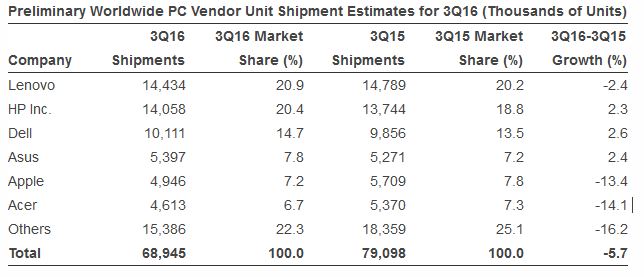Big G said that this was the eighth consecutive quarter of PC shipment decline, the longest duration of decline in the history of the PC industry.
PC manufacturers faced many challenges, which included weak back-to-school demand, and ongoing low demand in the consumer market, especially in emerging markets.
Mikako Kitagawa, principal analyst at Gartner, said that the extension of the lifetime of the PC caused by the excess of consumer devices, and weak PC consumer demand in emerging markets had not helped.
"According to our 2016 personal technology survey, the majority of consumers own, and use, at least three different types of devices in mature markets. Among these devices, the PC is not a high priority device for the majority of consumers, so they do not feel the need to upgrade their PCs as often as they used to. Some may never decide to upgrade to a PC again. In emerging markets, PC penetration is low, but consumers are not keen to own PCs. Consumers in emerging markets primarily use smartphones or phablets for their computing needs, and they don't find the need to use a PC as much as consumers in mature markets," Kitagawa said.
The PC market continues to consolidate, as the top six vendors combined for a record high 78 percent of PC shipments in the third quarter of 2016
Lenovo continued to be the worldwide market leader based on preliminary PC shipments, but HP Inc. nearly tied for this top spot, and these rankings could change when final shipment results are published. Lenovo has recorded six consecutive quarters of year-over-year shipment declines, while the nearest competitors, HP Inc. and Dell, have recorded shipment growth since the second quarter of 2016.





